Our neighbor Monsieur C. called last night to ask about his patient. A month now since our grafting lesson and each day we check the old/young pear tree for new signs of life. I tell him the first green bud just popped and his pleasure is audible – he’ll hop over on his bicycle to see for himself.
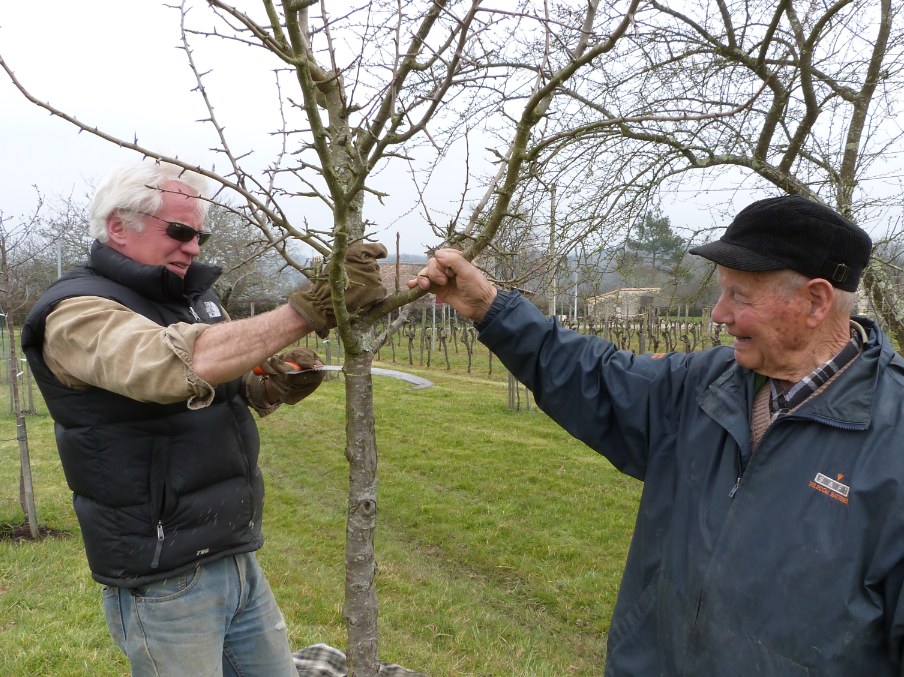
Monsieur C – “Anthony” is helping us achieve a grand wish – learning how to graft trees. But his entry into our life is an even grander wish fulfillment, the discovery of an endangered species in our own back yard: an octogenarian who embodies local knowledge and savoir faire, not just from his own decades of life, but from absorbing that of generations before him. A living memory, able to tell us of the days just fifty years ago when local officials were beloved because of their sense of service and incorruptibility; when local townspeople didn’t wait months for a government agency to repair a road, they did it themselves. When you’re with Anthony you sense a series of links-unbroken that go back a reassuringly long time.
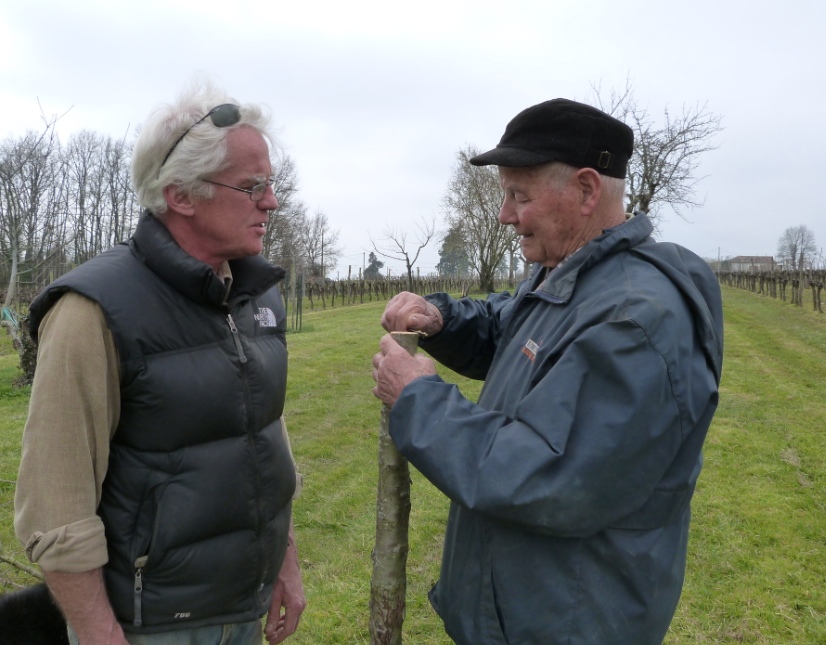
We visited Anthony at his farm this winter – he is just a kilometer away as the crow flies, on the next hill over. We toured his vineyard, garden, vegetable plot and chicken yard and found ourselves transported back a hundred years. He and his bright wife Marguerite served us vin de buisson that they make themselves, and brought out a black and white photograph of the handsome young Anthony, harness around his shoulders, setting to plow his land with two oxen. In two hours we learned enough to fill the Intro chapter of a book. It pains me to wonder who will write down the rest.
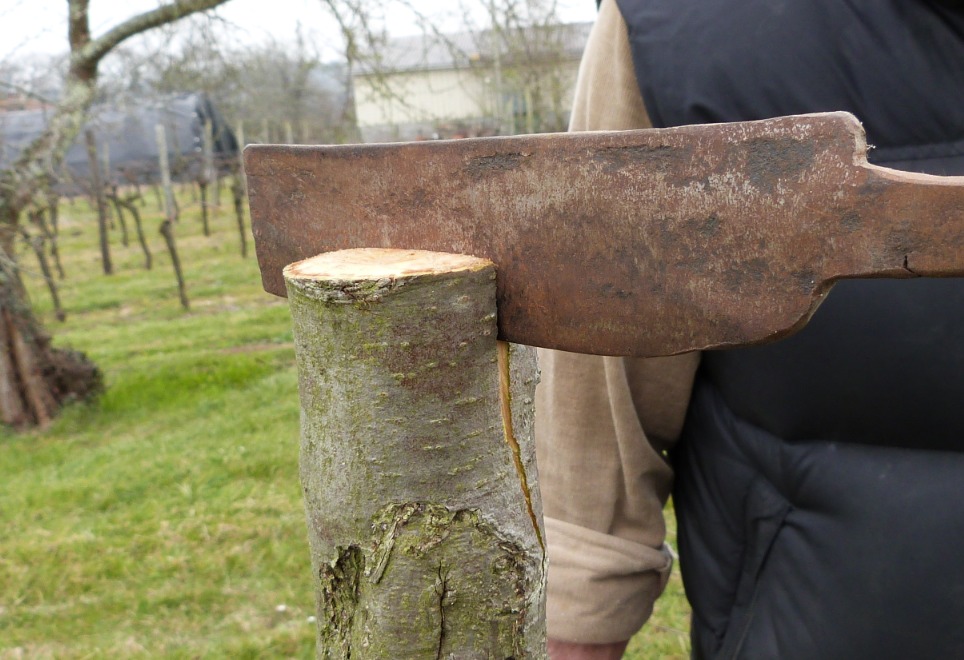
A few weeks later Anthony showed up on his bicycle with materials for our grafting lesson and a gift of two hazelnut trees. He knew we were planting a “biodiversity hedge” and that nut bushes would be much appreciated by the local fauna.
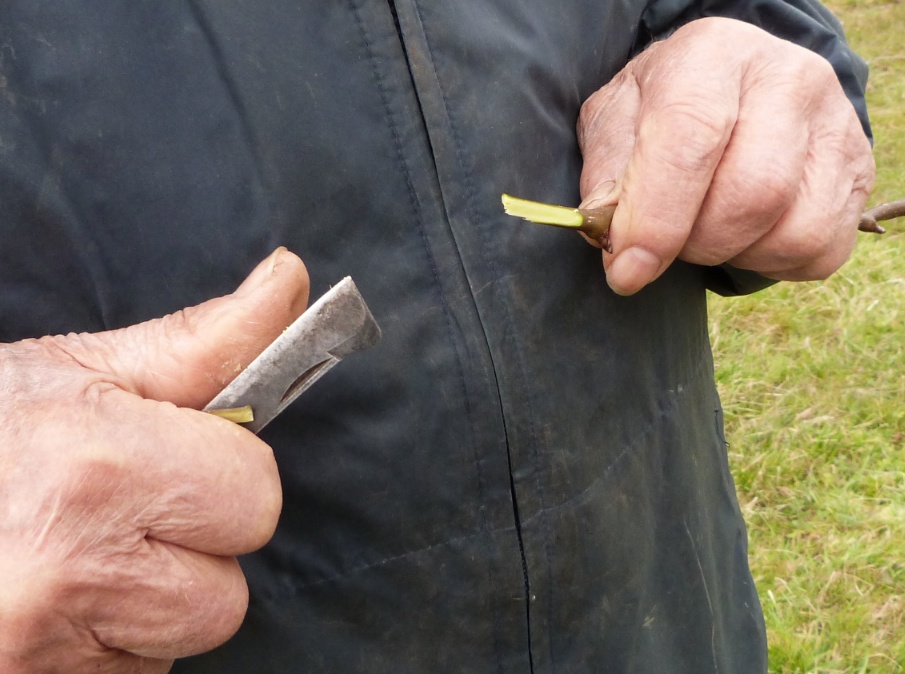
In the orchard he explained you don’t have to cut down a healthy, mature fruit tree just because it’s sterile. You get fruit faster by grafting – with less work and less cost. For this pear tree he brought four grafting stems from his Conference pear tree.
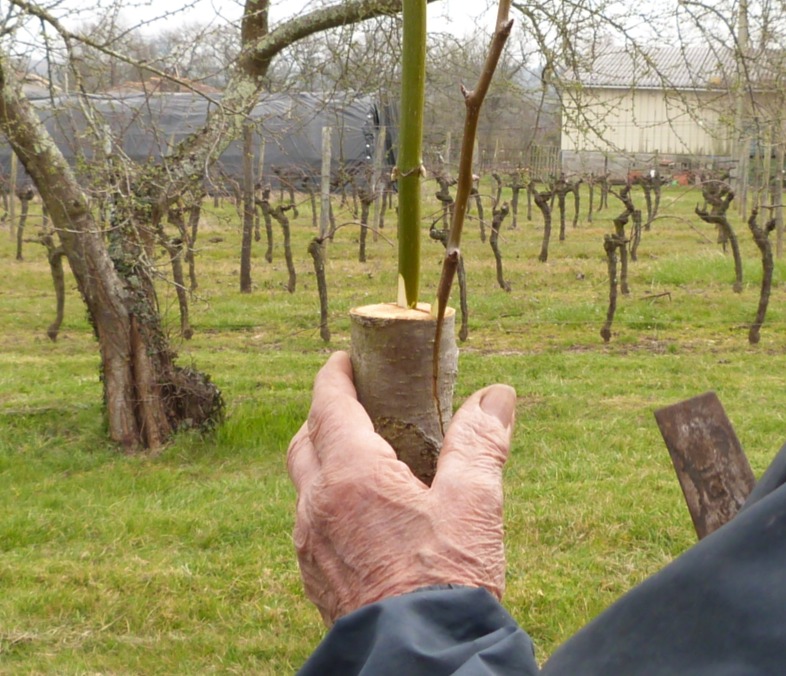
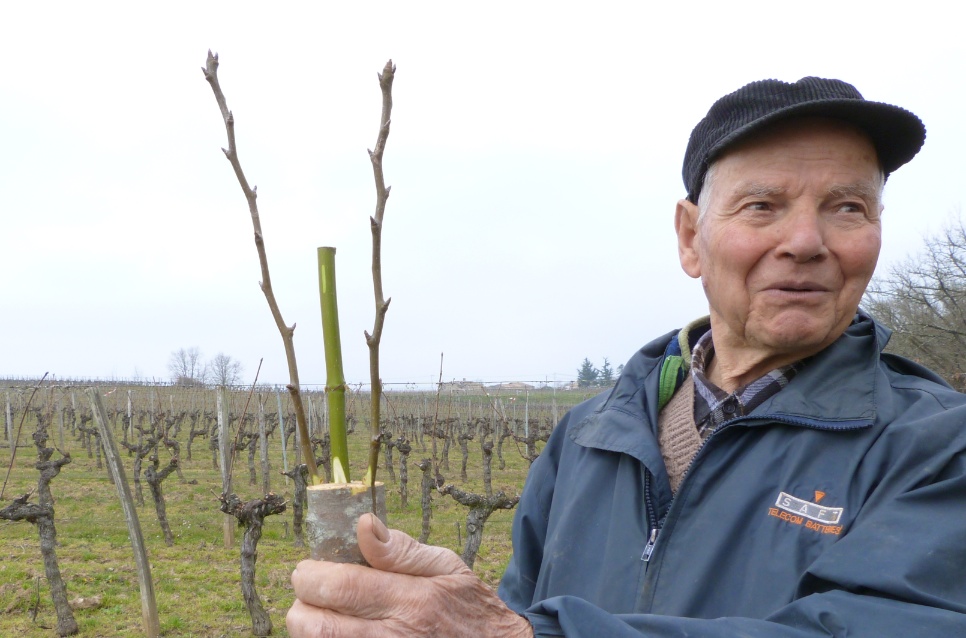
These photos show most of the details of the process. One of the secrets to a successful graft is making sure the graft stems are flush with the bark of the tree. Your fingers will tell if it’s smooth. To improve our chances that one graft stem will take, he placed four.

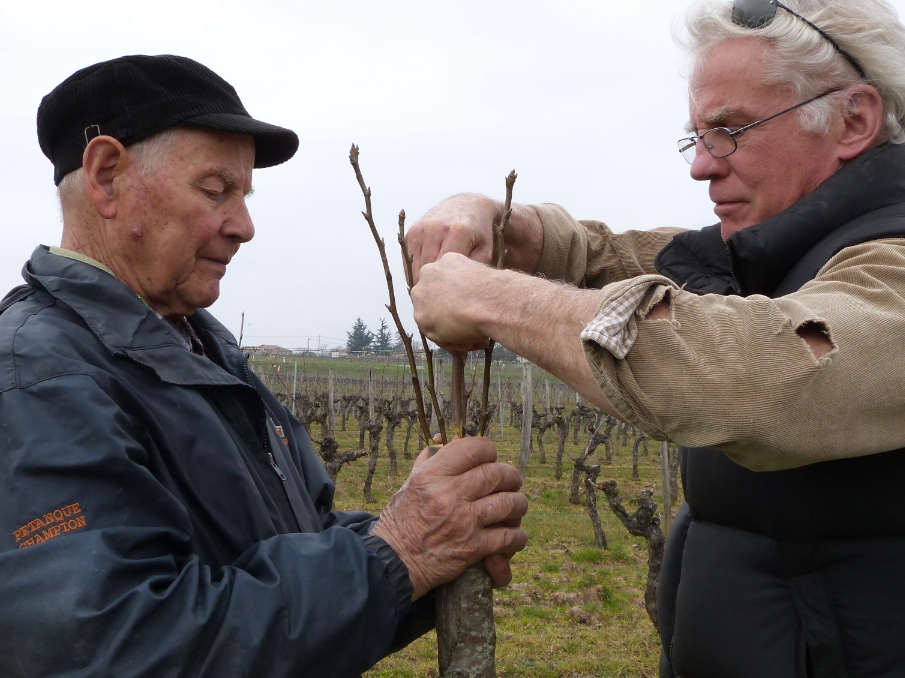
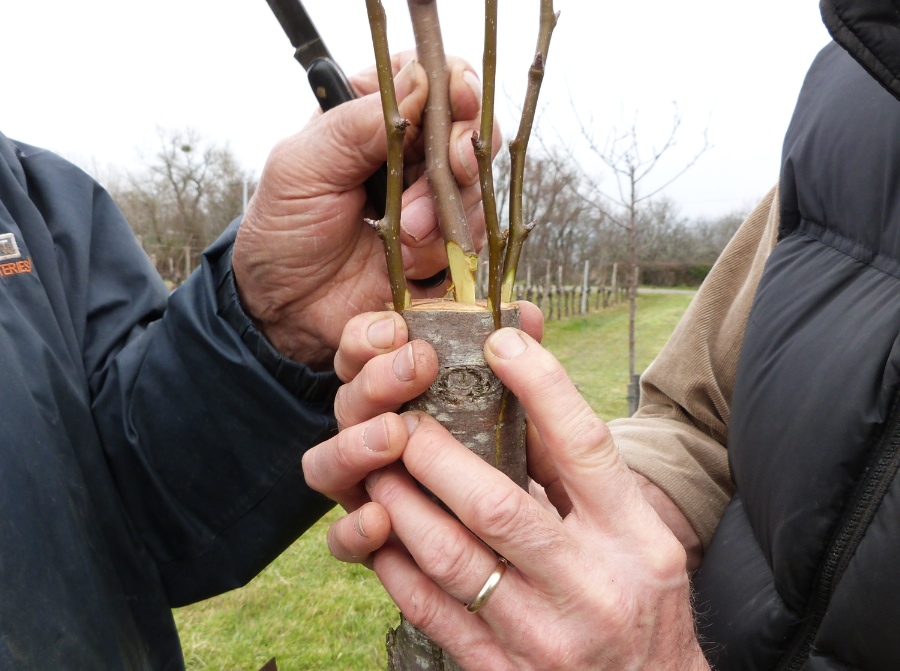
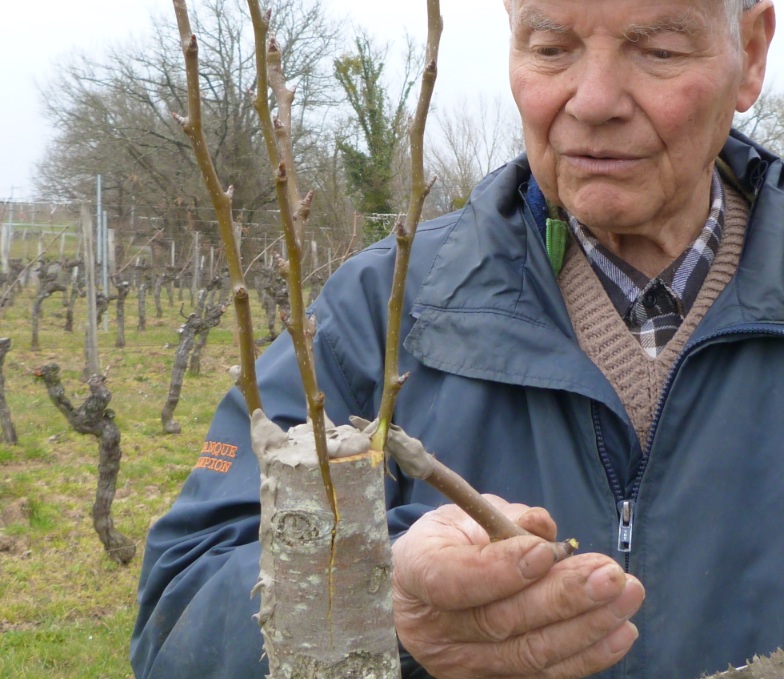
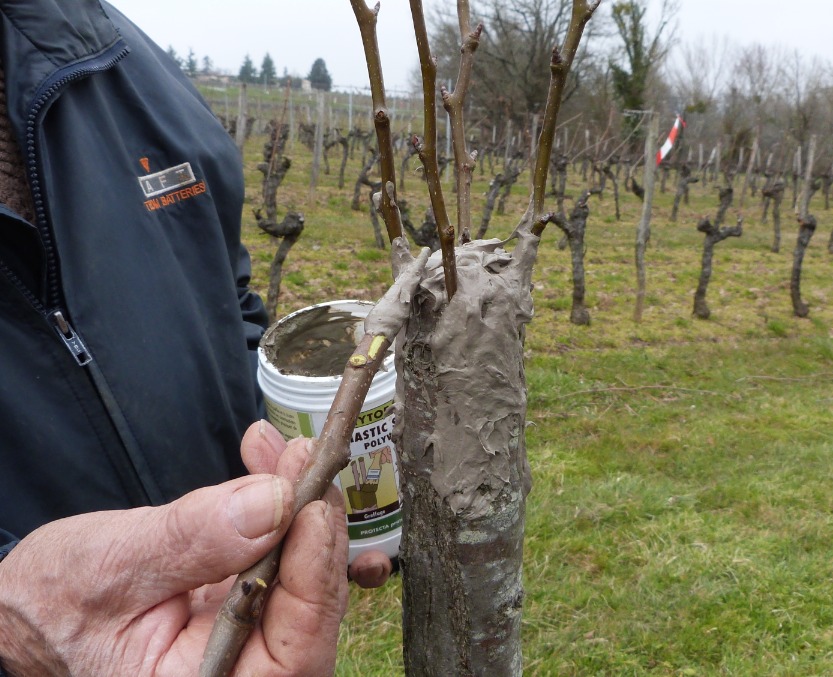
The fifth and highest branch is actually a temporary perch for birds, to make sure they don’t alight on the fragile graft stems. To hold it all in place, Anthony brought flexible young shoots from a willow tree. When the pear tree has absorbed the graft, the willow ties will disintegrate.
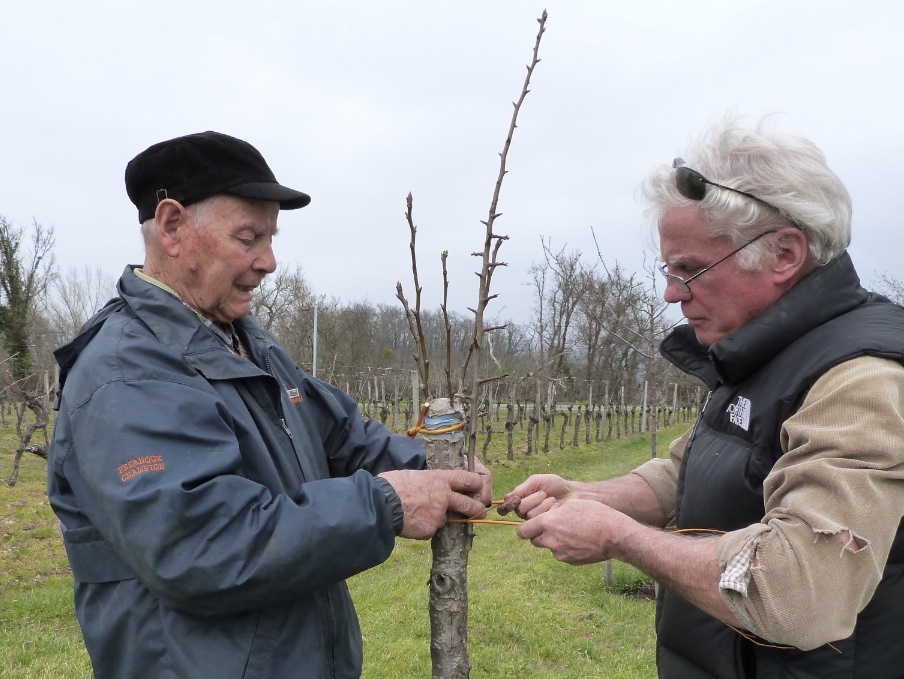
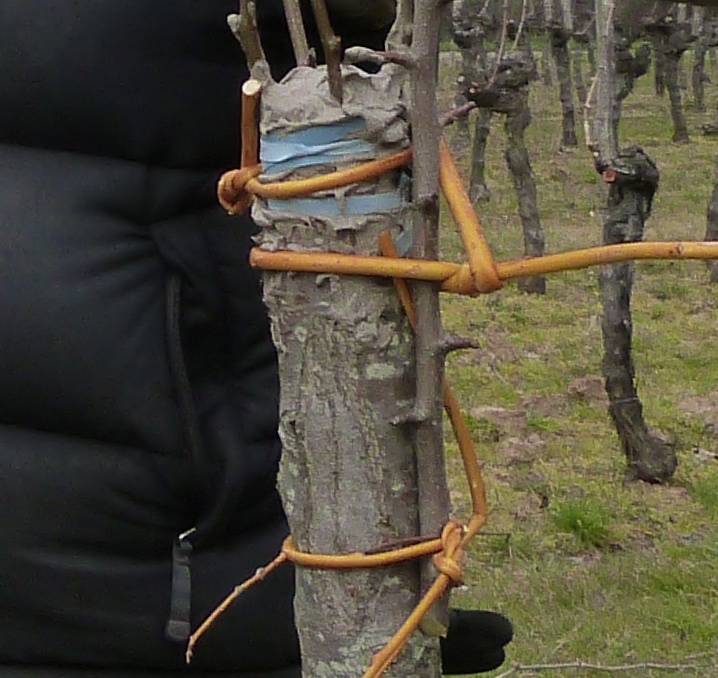
When we finished, we admired our work and discussed the marvel of husbandry – helping this fragile planet create bounty, without abusing the hand that feeds.
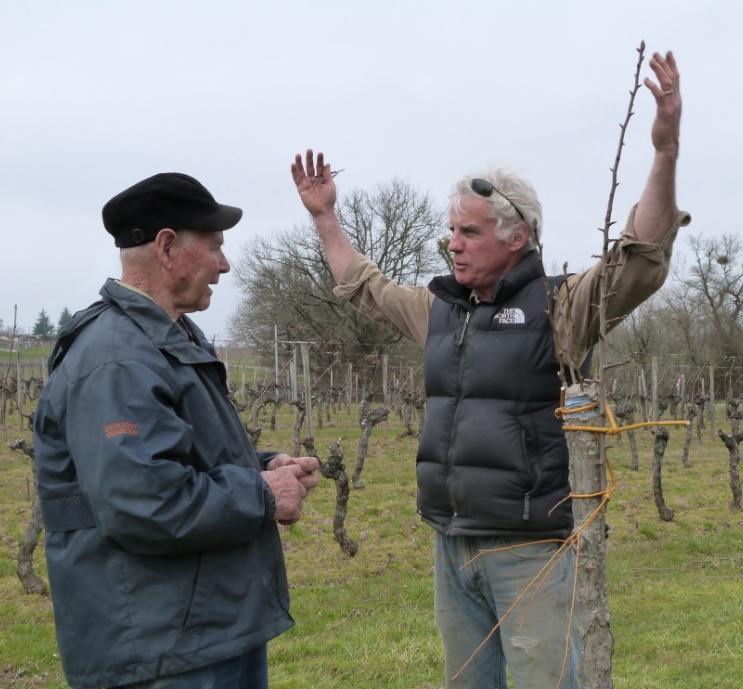
Spring arrived in the orchard this week.
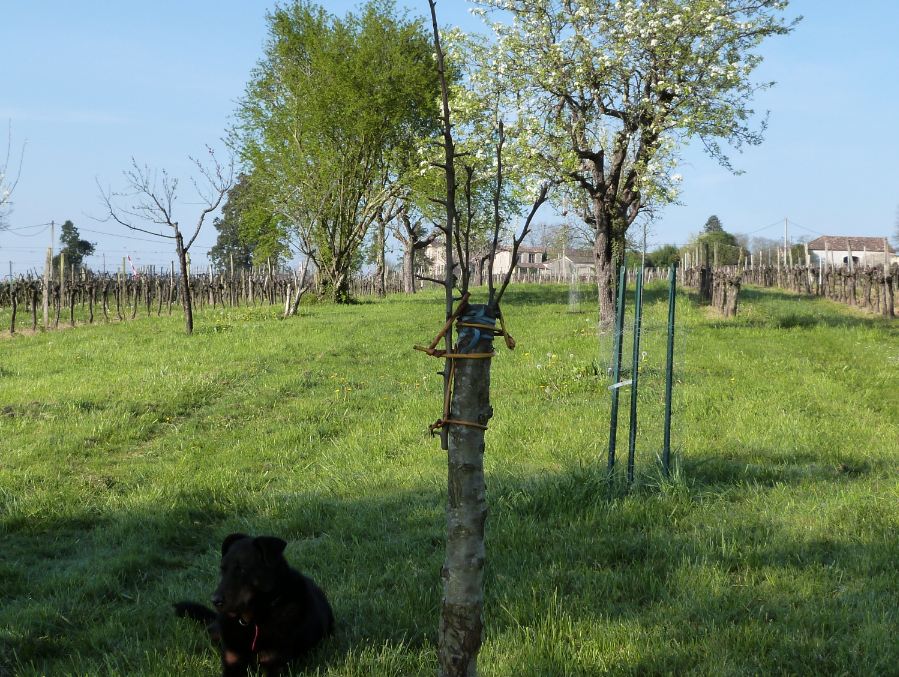
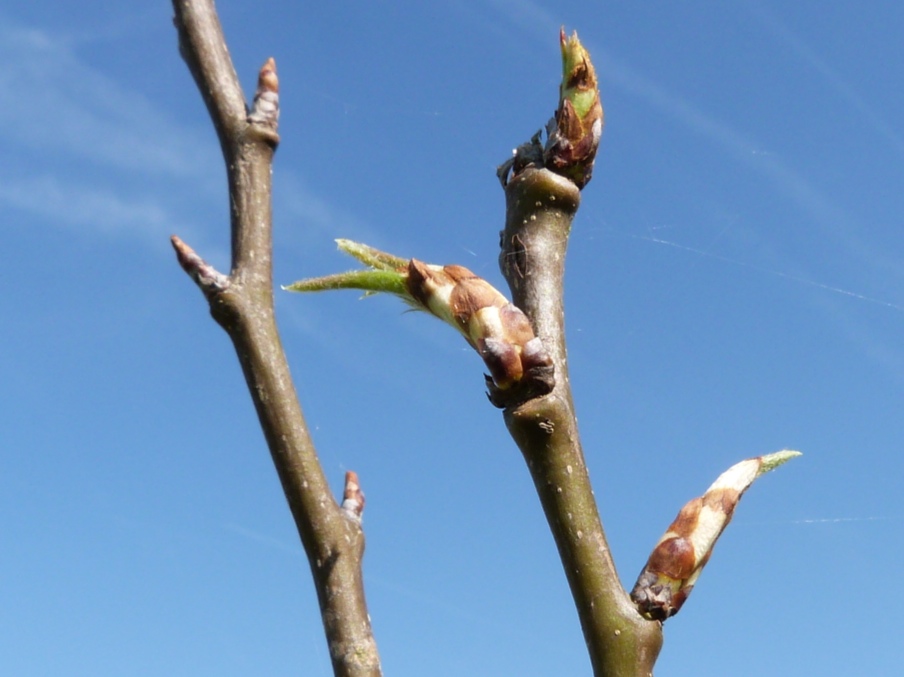
I asked Anthony if I could show him in this story. He said his greatest pleasure is to offer the fruits of his knowledge to others while he still can.

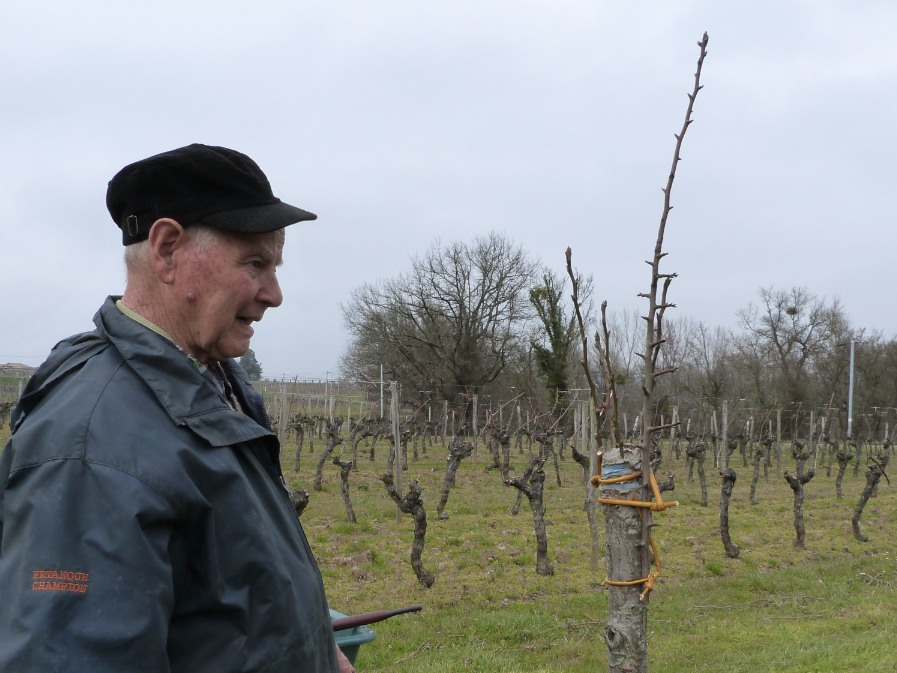

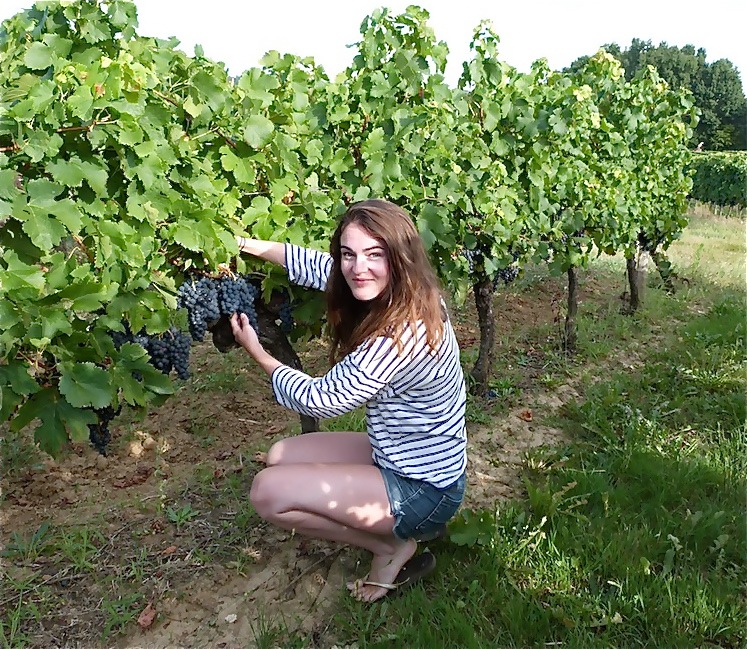
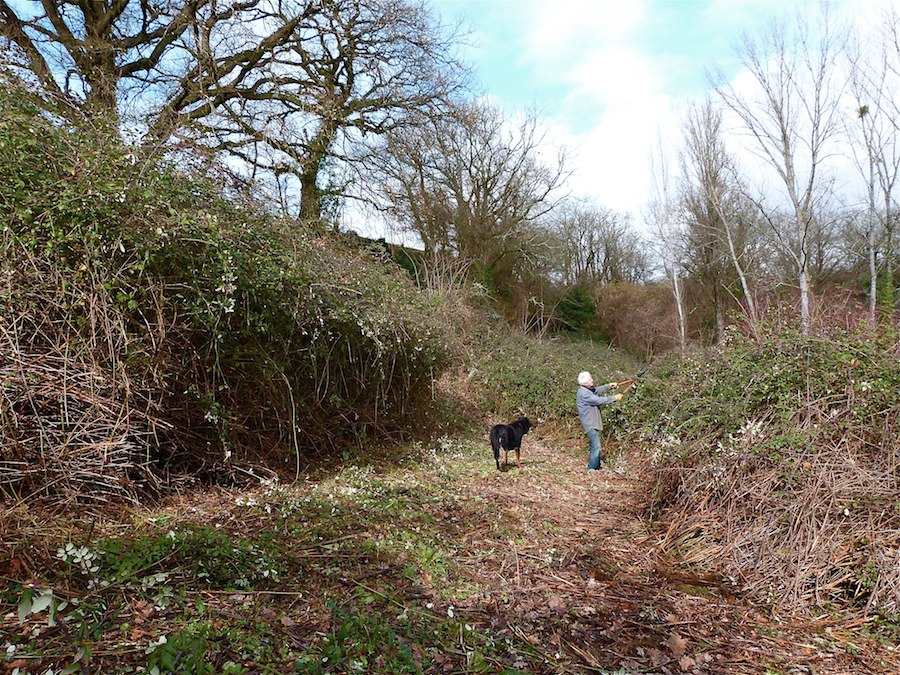
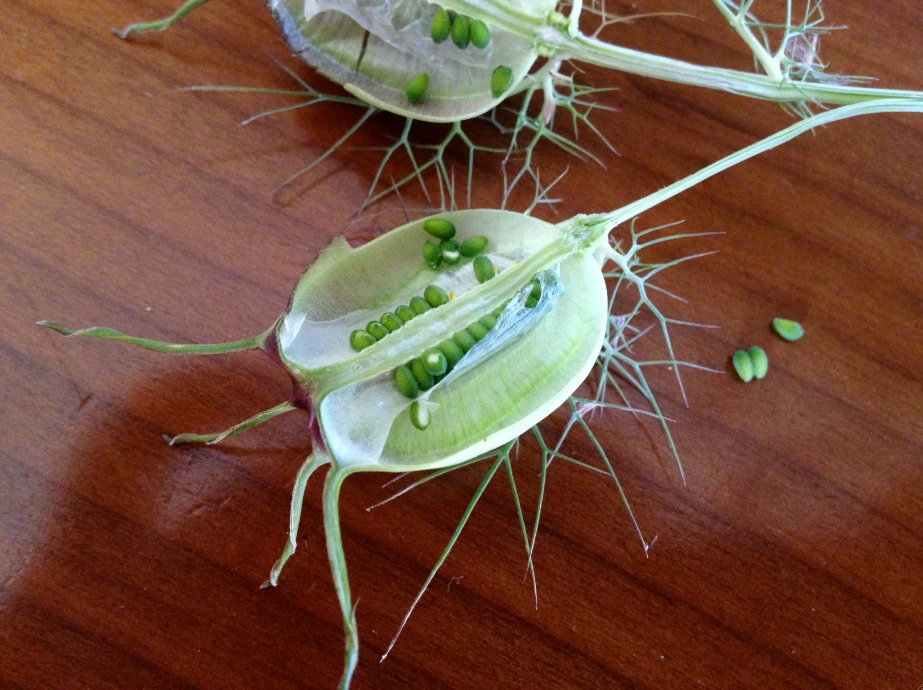
3 thoughts on “To Graft a Fruit Tree – Lesson from a Village Elder”
So interesting, Mary! Thank you.
I’m so grateful to you for so generously sharing your world with the rest of us. As I read about your pear tree and see the photos, it feels as if beauty, light, graciousness and wisdom have been grafted into my heart.
Mary, your posts are always so elemental, reminding us of deep human history and deep natural history. Especially for this American in a culture given to an insatiable hunger for distraction and immediacy, you remind me of the basic elements of life.